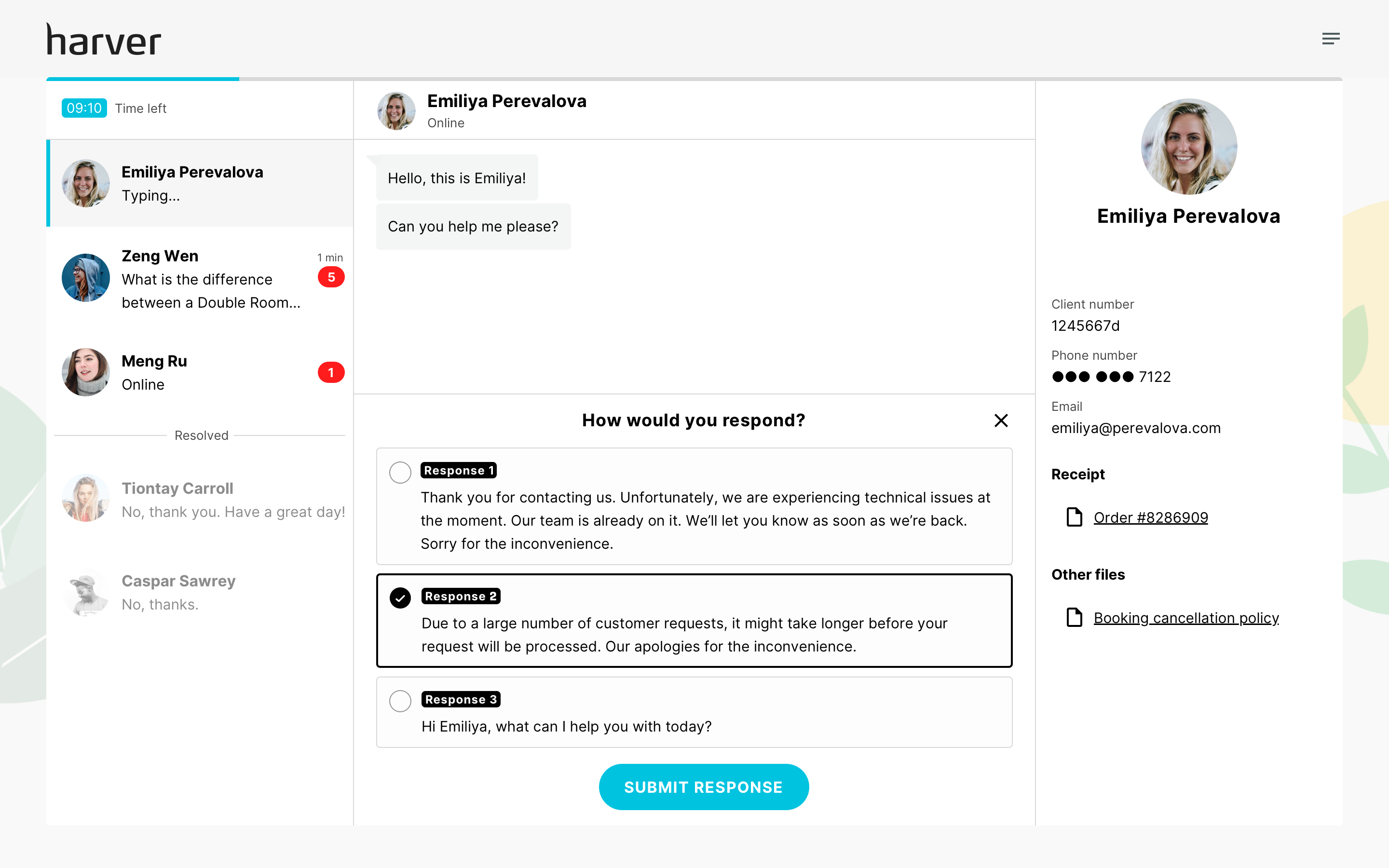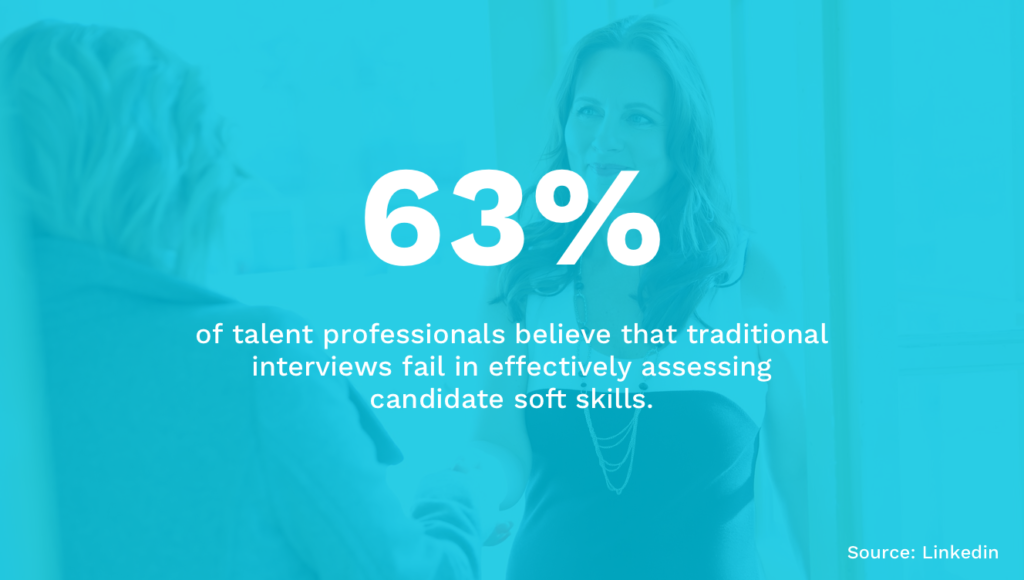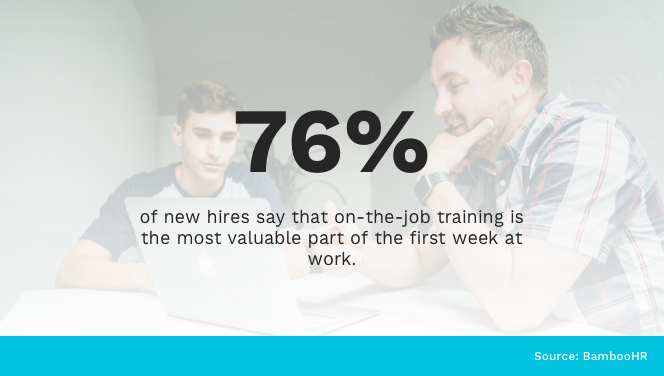Finding the right person for a contact center role can be a lengthy process, and there’s no guarantee that someone who looks great on paper will actually suit the role in practice. Job simulations are a great way of providing data on their capability, as you can see how they might deal with inbound calling, live web chats, or data entry.
Here, we’ll give a rundown of five advantages of using job simulations when hiring contact center agents.
What’s in?
Like what you see?
Don’t miss out. Subscribe to our quarterly digest to get the latest TA and TM resources delivered right to your inbox.
What are job simulations?
Job simulations, or work simulations, are a type of assessment used during the hiring process. Unlike many general tests, they focus on tasks that would be required during the job.
Job simulations can be used for various types of jobs in many fields. Secretaries might take minutes from a recording of a meeting, while software developers might have to find the source of a particular bug. For contact center agents, they often focus on a mixture of resolving customer issues via phone or live chat, inputting data, and responding to emails.
Like the rest of the interview processes, the job simulations can take place either in-person or online. Offering them online allows you to use them earlier in the process and narrow down your applicant list faster. What’s more, they make your remote recruiting process more effective, as well as more interactive.
While they can take some time to develop, once you have simulations in place, they can be used repeatedly. This is especially useful for companies that are scaling up and need to hire a lot of people for similar roles.
A contact center job simulation recreates realistic scenarios agents encounter in their role and immerses candidate into them. There are different types of simulations that can be used for contact center hiring – call and live chat support simulation, data entry simulation, or transcription simulation.
Hire better live chat agents, at scale.
Dive into the rise of live chat, the skills of top-performing agents, and how to best assess them to reduce attrition and guarantee top-notch customer service.

Why use job simulations in your contact center hiring process?
1. Testing job-relevant skills
The most important thing you want from a new employee is the ability to do the job you need. This sounds simple, but it’s actually quite hard to screen for. Reading a CV and cover letter tells you what they want you to know, and their past experience may well suggest they’re well suited but until you see them in action, you can’t be sure.
The same goes for interviews – we’ve all encountered people who interview incredibly well but then struggle at the job. The opposite is true as well, as many people may interview poorly but could have been perfect with a little bit of training.
Testing can go some way towards helping with this, providing actual data on the candidates’ skills. For instance, if you’re hiring a contact center agent for a bank, it’s good to know whether your applicants have strong numerical reasoning skills.
Static tests can’t tell you everything, though, especially as they often place unrealistic conditions on the applicant. Sitting in a room with nothing but a pen and paper isn’t how most jobs work. Someone who struggles in this setting may well excel when given access to a full workplace, with the ability to use search engines, calculators, and other assistive tools.
Job simulations directly test skills that are relevant to the job, in the setting in which they’ll be used. Some of these skills and competencies aren’t something that you can easily assess in other ways. This is especially relevant when hiring contact center agents, as one of these competencies is the ability to empathize and handle difficult, emotional customers.
You can customize your work simulations to focus on the aspects you deem most valuable. With contact centers, you might be looking for people with a natural aptitude for strong customer service. This is quite hard to test for in a traditional application process, but very easy to judge through job simulations.
Job simulations provide data on the skills you consider relevant for the job itself, and they allow you to test those skills in a realistic setting, rather than relying on awkward roleplays where an interviewer pretends to be an angry customer or a pen-and-paper test with no context. That means you can see how the candidate responds to the job itself – providing you the best insight into their capabilities.

A live chat assessment simulation helps you get insights into candidates’ behavior and make more consistent hiring decisions based on data.
2. Deeper insights
As well as testing for specific job-relevant skills, simulations allow you to gain deeper insights into candidates than you would otherwise be able to. We’ve touched on this above, but it goes beyond skill tests. Job simulations also allow you to consider your applicants’ personality, how they respond to stress, and whether they’ll fit with the team.
Let’s imagine two candidates, both applying for an inbound-only contact center agent role relating to a mobile app. Candidate A has a degree in English, has been working in an outbound call center focused on e-commerce mobile marketing and came across as well-prepared and charming in their interview. Candidate B has no degree, has been working in a retail store with no online presence, and came across as shy and awkward in the interview. Normally, you’d be inclined to hire A.
However, when undertaking a work simulation you might learn some interesting things about them. Candidate A, when faced with an angry customer ends up raising their voice in irritation, gets flustered at having done so, and this continues into the next few simulated calls. Candidate B stays calm, empathizes with the problem and helps reach a resolution, before moving on unphased.
This shows you a much deeper insight than you can get from the interview, letting you see how someone’s personality might help or hinder them at their job. In a traditional interview – even one with roleplay components – A would have been unlikely to get flustered and would have come across as the far better candidate.
However, by simulating the job, B had the opportunity to shine. People like B may have been ghosted after job interviews and never received feedback to improve their interviewing skills. A, meanwhile, may be well-practiced thanks to a good university careers department or more interview experience. By using job simulation as part of the application process, companies can see beyond this to their actual suitability for a role.

Measuring and assessing soft skills in your contact center hiring process isn’t easy. Using job simulations helps you evaluate these skills in a more consistent way.
3. An equal playing field
Diversity and inclusion is vital if companies are to continue to grow. After all, what is world-class customer service without a team of agents who can relate to people from all walks of life?
Getting to a point where you have an inclusive, diverse workforce can be a challenge. There are many issues that companies need to work on. Some businesses encounter issues with employee retention and need to work on ongoing support. Others might have difficulty with getting applicants at all and need to write more inclusive job descriptions. A common problem that people might not even notice is unconscious hiring bias.
We all have unconscious bias, and this can show itself during the hiring process without anyone realizing. Whether that’s making a judgement on a name, a photo, or someone’s background details, it’s something many companies are working on preventing. One of the ways of preventing bias from creeping in is to use job simulations and a blind application process side by side.
By assessing the results of job simulations, unlinked to any names or images of the applicants, you can look at the data itself instead of being influenced by any unconscious bias. With the right candidate selection software, the whole pre-employment assessment can be done this way – not just the simulation part.
This is particularly useful when hiring for contact center agents, as many of the tests you might do without using work simulations would be impossible to do blind. For instance, even on a phone interview, you’ll hear a candidate’s voice and their accent. This is enough information for you to form certain ideas – even without knowing you’re doing it! By relying on simulation software to present the results of tests to you, you can avoid this happening.
While we know from research that having anonymized applications helps avoid gender bias, there’s also a positive bias you might want to avoid. Someone with a neutral sounding accent may often be judged to be a better speaker than someone with a strong accent, even if the content of what they’re saying is less good. Job simulations focus on the content and quality of skill, rather than the appearance of such.

Using job simulations for hiring contact center agents contributes to creating a transparent and fair hiring process.
4. Applicants can opt out
This might seem like a disadvantage at first. Why is a tool encouraging opting out a good thing? Think about it from a long-term perspective. Would you rather a good candidate opts out during the application stage, or during their probation period? It’s far better for both the applicant and the employer if they leave before they’re hired. Having someone leave after hiring will affect your workforce management, while them leaving during the hiring process won’t.
Unwanted contact center attrition is a common problem and using a job simulation helps combat it.
Job simulations give applicants an opportunity to see what the job actually involves. This is even more important with the growth of remote work, where there is less opportunity to see the offices or do a (paid) trial shift next to the hiring manager. Many applicants may find that while the job sounded like something they might enjoy, it doesn’t suit them – even if they’re good at it!
Even moving between companies in the same field can have big differences.
For instance, imagine an applicant is looking at SaaS marketing agencies. They have experience in contact centers and are familiar with the industry. They have a few interviews lined up, two of which involve job simulations. Both roles are inbound-only and involve live chat as well.
However, while doing the simulations, the applicant can see the expected focus – perhaps one is a 70/30 split in favor of phone calls, whilst the other is 70/30 in favor of live chat. Having this information available will help them make the decision – and in doing so, mean that you don’t select a candidate who won’t enjoy the job.
It also means that when you do offer someone the job, you know that they have an understanding of what the role entails. This way, there shouldn’t be any surprises when they start working. This puts the employer and employee on the same page, encourages the best performance, and improves retention.
- White paper
Before you continue!
Don’t forget to grab your free copy of our white paper on contact center volume hiring in 2021. Learn about:
-
The challenges currently shaping the contact e
center recruitment space - How employers can navigate the new remote-first reality, and the role of technology in a future-proof recruitment process
- The four building blocks of a fully digital recruitment process

5. Personalize training and onboarding
Having a general training course for new staff is great, as it ensures that everyone is taught the same things. However, it’s not always the most effective way, especially when you’re hiring one or two people at a time rather than a large cohort.
Rather than spending an equal amount of time on each aspect of training, regardless of a new hire’s personal strengths and weakness, you can use the data from their job simulation to personalize it.
Personalized onboarding means that new employees won’t find themselves left behind or bored, depending on the topic. If someone did exceptionally well at customer service but struggled a little bit with technology, why not spend extra time familiarizing them with your VoIP providers and database software?
Perhaps they were great at managing common problems but struggled with looking up new information. In which case, you can make sure they have access to FAQs and shortcuts that can help. This is especially helpful for remote workers, who won’t have the benefit of having colleagues in physical proximity to ask questions to.
As well as personalizing it for individuals, you can also use the aggregated data to improve your training in general. By gathering data from multiple applicants, you can see what areas people generally come in weakest at, and work on improving your training in those areas. This means you can focus your efforts on the resources that will be used most, and ensure you have an efficient onboarding process for all new employees.

Customized on-the-job training provides your new contact center agents with a great start at your organization.
Time to try it out?
As you can see from these five advantages, job simulations are a great addition to any pre-existing recruitment process. They’re especially useful for hiring contact center agents due to the skills that these jobs require being hard to test for in other ways. Being able to assess an applicant’s ability to deal with challenging customers is hugely important, and it’s worth using job simulations for that aspect alone.
| About the Author: John Allen, Director, Global SEO at RingCentral, a global UCaaS, VoIP and cti software provider. He has over 14 years of experience and an extensive background in building and optimizing digital marketing programs. He has written for websites such as Tapfiliate and Ceoblognation. |
Ready to transform your hiring process?

